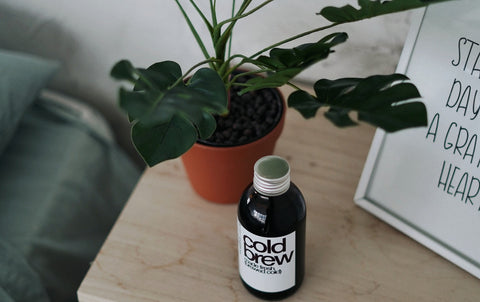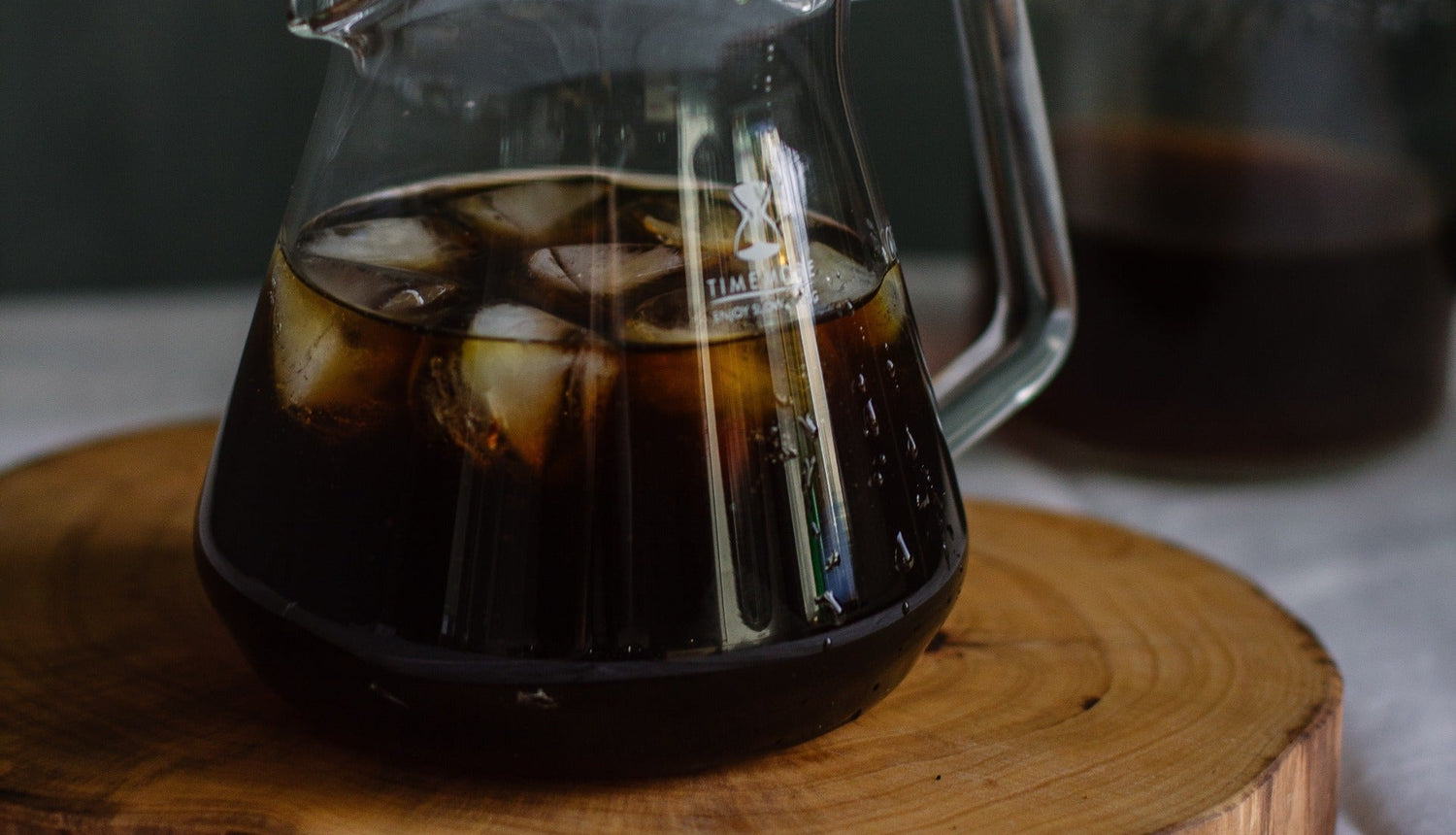Cold brew coffee is one of the most popular methods of methods of brewing coffee, especially during the warmer summer months. The cold temperature produced by the slow extraction process creates a sweeter, less acidic drink that can be enjoyed at any time of day.
There are many different types and brands available on the market today but which one is best? How do you even begin to distinguish between what’s actually the best coffee for cold brew and a bean that’ll taste watery and earthy once it’s brewed cold instead of hot? These are great questions, and we’re about to answer them for you!
What is Cold Brew Coffee?
Cold brew is a lot like iced coffee, but the process of brewing it is different. Iced coffee involves pouring hot water over ground beans before cooling them down in an ice bath or fridge for consumption. Cold brew, on the other hand, involves steeping ground coffee beans in cold temperatures. This results in a more mellow and less acidic flavor.
Since the process of cold brewing your coffee involves leaving it out for longer than steeping hot coffee, there tends to be an increased amount of caffeine in the final product as well. This makes it particularly popular among people who need an extra energy kick throughout their day.
As an added bonus, cold brew coffee is much easier to make at home than iced coffee. This means you can brew the perfect cup of cold brew at whatever time of day suits you best, and with minimal effort involved.
Before we look at specific types of coffee that are best for cold brew drinks, it helps to understand a little bit of coffee history. This will help you understand where different coffee beans come from and how they can affect the taste of your cold brew.
The History of Coffee & Types of Coffee Beans
Throughout time, coffee has evolved from a simple, ceremonial plant (look into how it was brewed and the elaborate ceremonies that accompany it) into one of the most important global commodities.
The history of coffee begins in Ethiopia. There, coffee plants were originally discovered in the highlands of the southwestern part of the country. Locals began to cultivate the plant and eventually exported them during an era when animals used for transportation were scarce due to raids from neighboring countries.
The first-ever recorded sale of coffee beans was in 1587. However, let's fast forward to the 18th century: coffee (or java as it was often known) had traveled to Europe, where the drink became renowned for its stimulating and energizing effect. Today, we can't imagine our lives without coffee…not even a single day.
Today, there are, on average, over 500 billion cups of coffee drunk every year across the globe. And, there are numerous different varieties of coffee you can try from different regions around the world. You have to factor in the altitude of where the coffee was grown, the type of coffee bean it is, and finally (and, quite honestly, most importantly here), how it was roasted.
Let's dive into the three most popular varieties of coffee when it comes to the roast, and how each of these can affect the taste of your morning cold brew.
Light Roast Coffees
Light roast coffee refers to a coffee that has been, well, lightly roasted. Light roast coffee has the highest amount of caffeine due to the fact that the longer you roast a coffee bean, the more caffeine gets cooked out. This is also (partly) why light roast coffees are a bit more acidic than darker roasts.
If you’re a real coffee aficionado, you might see trendy brands label their light roast coffee as a Cinnamon Roast, Light City Roast, or even a New England Roast. All you really need to know is that lightly roasted coffee beans have the most caffeine and usually the most flavor.
Medium Roast Coffees
A medium roast refers to a coffee that has been roasted until the bean is brown but not charred. In terms of the three basic types of roasting varieties, you’ll find that medium roast coffees are the most balanced in terms of flavor, aroma, and acidity. This means that if you’re looking for the best coffee for cold brew and your idea of great coffee is super balanced, a medium roast might be the one for you!
These types of coffee beans also have lighter acidity and lower caffeine content than their darker counterparts but are slightly more bitter than light-roasted coffees. Overall, they tend to have a stronger and earthier taste than light-roasted coffees as well.
Dark Roast Coffees
Dark roast coffee beans look almost black in color, as they have been roasted for longer than light and medium roast coffees (makes sense, right?). The one thing you’ll want to be aware of when it comes to dark roast coffee is that the coffee beans tend to lose their flavor the darker they are (because they’ve been cooked for so much longer than their lighter counterparts). This means that, with darker roasts, you’ll be getting low acidity at the cost of rich flavors.
That being said, dark roast coffees do tend to reveal deeper, darker flavors and are known for being generally flavored with notes of bittersweet chocolate, caramel, and molasses.
What's the Best Coffee for Cold Brew?
Now that we’ve explained the origins of coffee beans and the three main types of coffee roasts, you’re still probably wondering which is the best for making cold brew at home, right?
It all comes down to personal preferences based on flavor and accessibility, but light roasts are pretty great. Why? Since they were roasted for a shorter amount of time, sometimes just six or seven minutes, you find that the coffee is milder and a bit more flavorful than its dark roast counterparts. Best of all, lightly roasted cold brew still retains all the aromatic flavors from the beans.
Blended coffee can also be used for cold brew if you like enjoying the complexity of flavors in each cup. Blending coffee beans is expensive and time-consuming; some will use single-origin beans and others will mix up different types of Colombian Coffee from different regions of the country. Each has its advantages and will produce different flavor profiles.
Keep in mind that cold brew is prepared using coarse ground coffee, which is then mixed with water and left to steep over a period of twelve hours or more. This extraction process yields coffee that is both very smooth, yet bold and robust.
This means that if you opt for a lighter roast for your cold brew, that flavorful, aromatic coffee is going to taste even more flavorful after being steeped for such a long period of time.
Find the Best Coffee for Cold Brew Right Here
Here's the bottom line. Cold brew coffee is different from hot brewed coffee in a number of ways, which means that you need to pay attention to what kind of beans are used for cold brewing.
The best part is that you can find a variety of different flavors and styles of coffee without ever having to branch out from Colombian coffee! We know it can be hard to find Colombian coffee for making cold brew online, which is why we’ll leave you with this link so that you can easily find what you’re looking for.
Don’t let your morning pick-me-up turn into an afternoon slump! Browse through our Colombian coffee brands to find a type that suits your fancy or contact us if you have any questions about which might work best for you.





